Key takeaways:
- Fluoride treatments strengthen tooth enamel, remineralize weakened areas, and reduce the risk of cavities for both children and adults.
- Maintaining good dental health is crucial for overall well-being and can prevent serious health issues like heart disease and diabetes.
- Types of fluoride treatments include in-office varnishes, gels, foams, and home-use toothpaste and mouth rinses.
- The frequency of fluoride treatments varies based on individual dental needs, with recommendations typically ranging from once a year to every three to six months for those at higher risk.
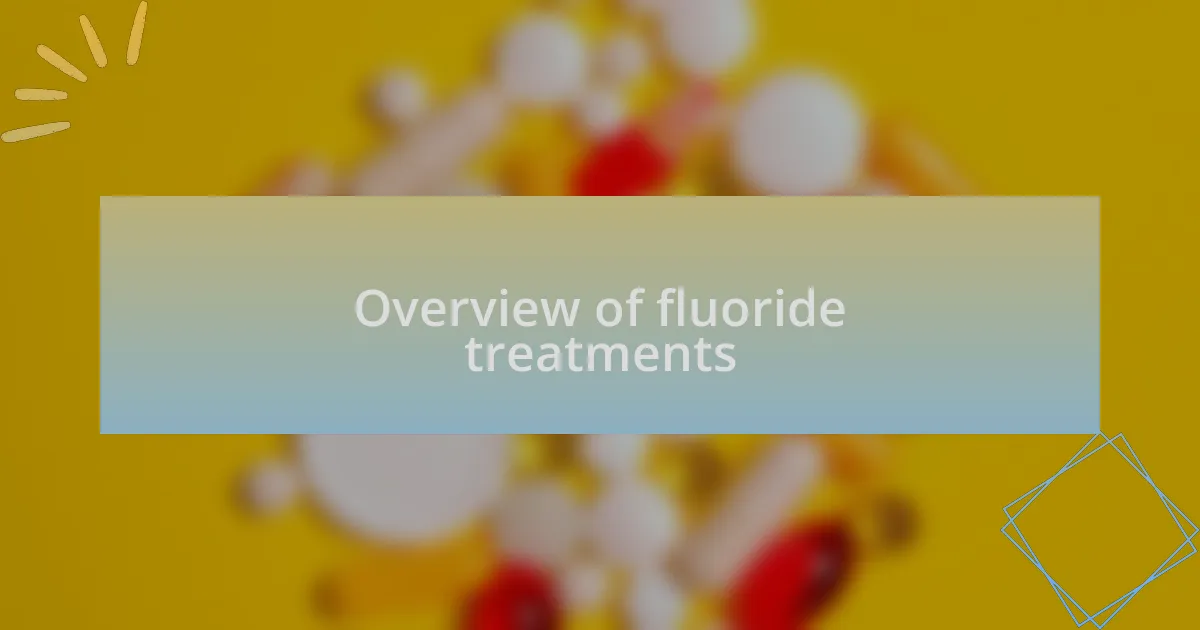
Overview of fluoride treatments
Fluoride treatments are a preventive dental care option designed to strengthen tooth enamel and reduce the risk of cavities. These treatments typically involve the application of a concentrated fluoride solution directly to the teeth, often performed in a dental clinic. I remember the first time I experienced a fluoride treatment; it felt like a refreshing boost for my teeth, and I left the office feeling like I had given my smile a shield against decay.
In practice, fluoride works by remineralizing enamel, which can be eroded by acid-producing bacteria in the mouth. This process is particularly beneficial for children, whose teeth are still developing, but it’s essential for adults too. Can you imagine the peace of mind that comes with knowing your teeth are fortified against the daily wear and tear of sugary snacks and drinks? It’s a simple step that often goes overlooked, but it can have a lasting impact on oral health.
Different forms of fluoride treatments exist, from gels and varnishes to foams and mouth rinses, each tailored to meet varying needs. Personally, I find that knowing there’s a straightforward, effective solution readily available makes a big difference in my approach to dental care. It’s reassuring to think that something as simple as fluoride can play a crucial role in maintaining a healthy smile.

Importance of dental health
Maintaining good dental health is essential for overall well-being. I’ve learned that healthy teeth and gums contribute not just to a bright smile but also to confidence and self-esteem. Have you ever noticed how much more you smile when you know your teeth are in great shape?
There’s a direct link between oral health and general health that often surprises people. For instance, chronic dental issues can lead to serious conditions like heart disease or diabetes. I recall a time when a friend neglected their dental check-ups, and it led to much bigger health challenges down the road. It makes you think: could regular dental visits have changed that outcome?
Moreover, strong dental health can enhance your quality of life. From being able to enjoy a wide variety of foods without pain to speaking clearly, our teeth play critical roles in daily activities. I always appreciate the joy of indulging in my favorite crunchy snacks without the fear of sensitivity. It’s a little reminder of why we should prioritize our dental health every day.
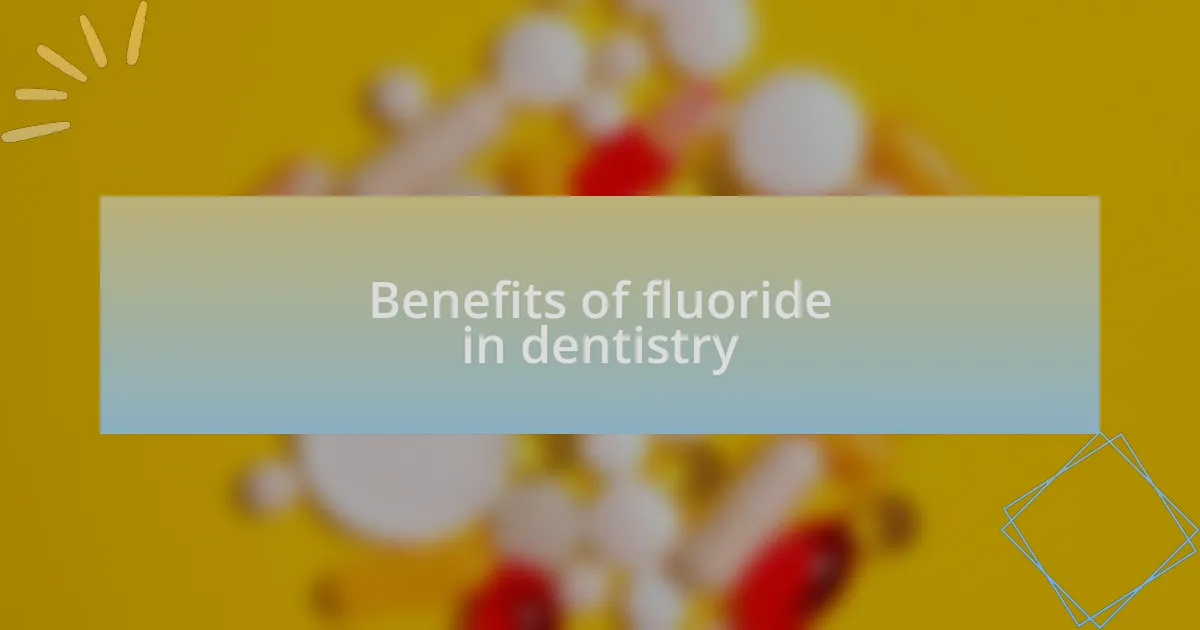
Benefits of fluoride in dentistry
Fluoride treatments are often highlighted for their ability to strengthen enamel, the outer layer of our teeth. I remember the first time my dentist explained how fluoride can help remineralize weakened areas in enamel, making it more resistant to cavities. It was eye-opening to learn that something as simple as a fluoride application can create a protective barrier against decay. Can you imagine cutting the risk of cavities just by using a treatment that takes only a few minutes?
In addition to cavity prevention, fluoride also enhances the overall effectiveness of oral hygiene routines. After incorporating regular fluoride treatments into my dental care, I’ve noticed how much easier it is to maintain my teeth. It’s reassuring to know that even if I occasionally slip up on flossing, fluoride is there to help protect my smile. Have you ever wondered if a little extra support could make a big difference in your dental care?
Beyond protecting against cavities, fluoride can aid in controlling dental sensitivity. I recall a time when a cold beverage sent shivers through my teeth, and it was uncomfortable. Since starting fluoride treatments, those sudden pangs of sensitivity have diminished significantly. It’s like having a security blanket for my teeth, allowing me to enjoy all my favorite foods, no worries attached!
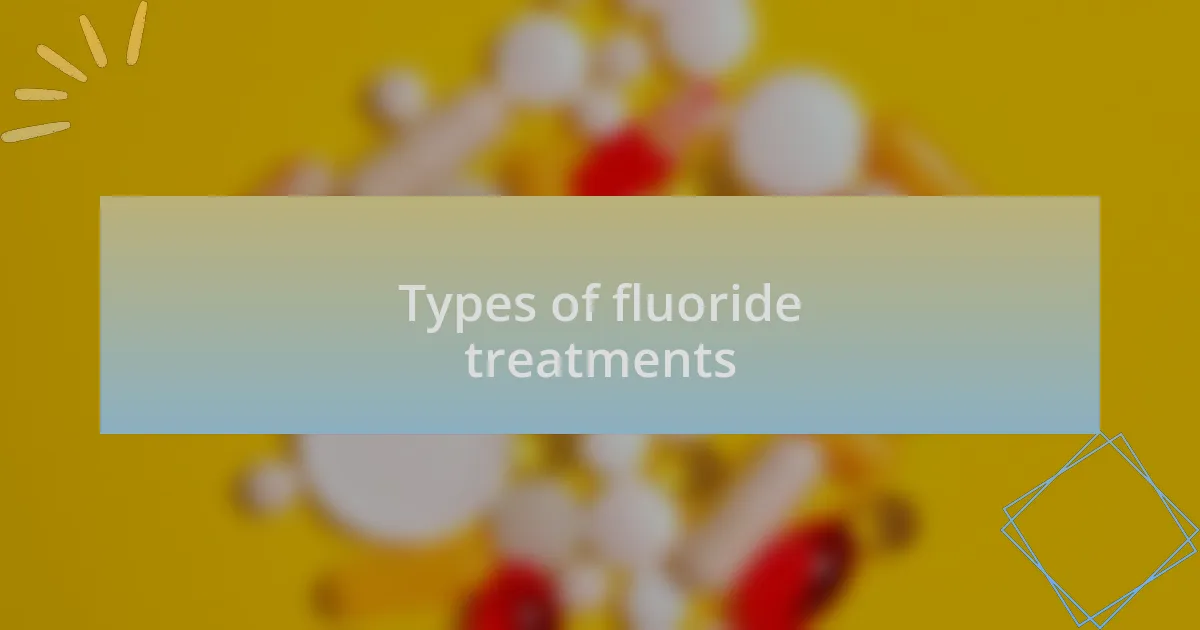
Types of fluoride treatments
When it comes to fluoride treatments, there are several types that cater to different needs. For instance, in-office fluoride varnish is a popular option where a dentist applies a concentrated fluoride solution directly onto the teeth. I remember sitting in the dentist’s chair and feeling a mix of anticipation and relaxation when they applied the varnish, knowing I was investing in my dental health for the long term.
Another commonly used method is fluoride gel or foam, which is often applied in a tray that fits over your teeth. This treatment usually takes a little longer, but I find the sensation oddly comforting, almost like a mini self-care session. Have you ever experienced that moment when you’re in a dental chair, and you can just feel that protective layer forming around your teeth?
Lastly, we can’t overlook fluoride toothpaste and mouth rinses that are available for home use. I’ve made it a habit to use fluoride toothpaste every day, and I often think about how important this small step is in my routine. It’s amazing how something as simple as brushing can become a vital part of preventing decay—talk about a small action with significant impact!
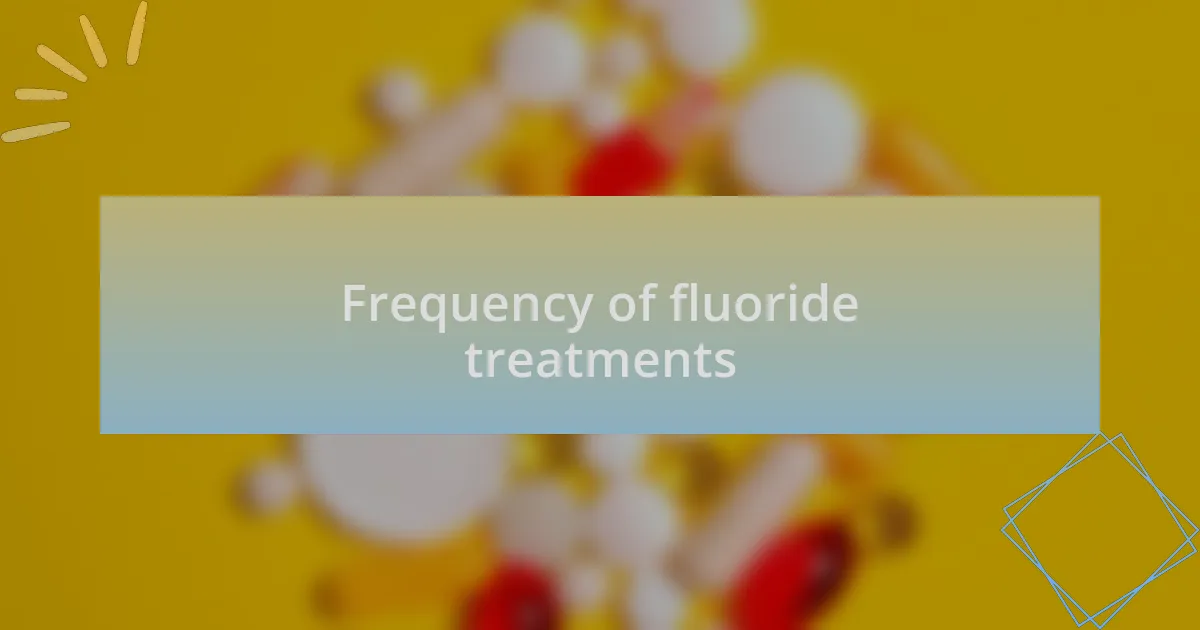
Frequency of fluoride treatments
The frequency of fluoride treatments can vary based on individual dental needs and risk factors. For those prone to cavities or with a history of dental issues, the dentist might recommend treatments every three to six months. I remember my own visits as a child; the anticipation of that fluoride treatment felt like a special event, reinforcing the importance of dental care at a young age.
On the other hand, if you practice good oral hygiene and have healthy teeth, your dentist may suggest treatments once a year. Reflecting on my own journey, I’ve noticed that the more consistent I am with my dental check-ups, the more relaxed I feel during those appointments. It’s like building a solid foundation; the more you nurture it, the stronger it becomes.
In some cases, patients with specific conditions, like dry mouth or braces, might need more frequent treatments. When I wore braces, I found that extra layer of fluoride was a relief; it felt like a safety net. Have you considered how your individual circumstances might influence the recommendations from your dentist? Understanding this can empower you to take control of your dental health.
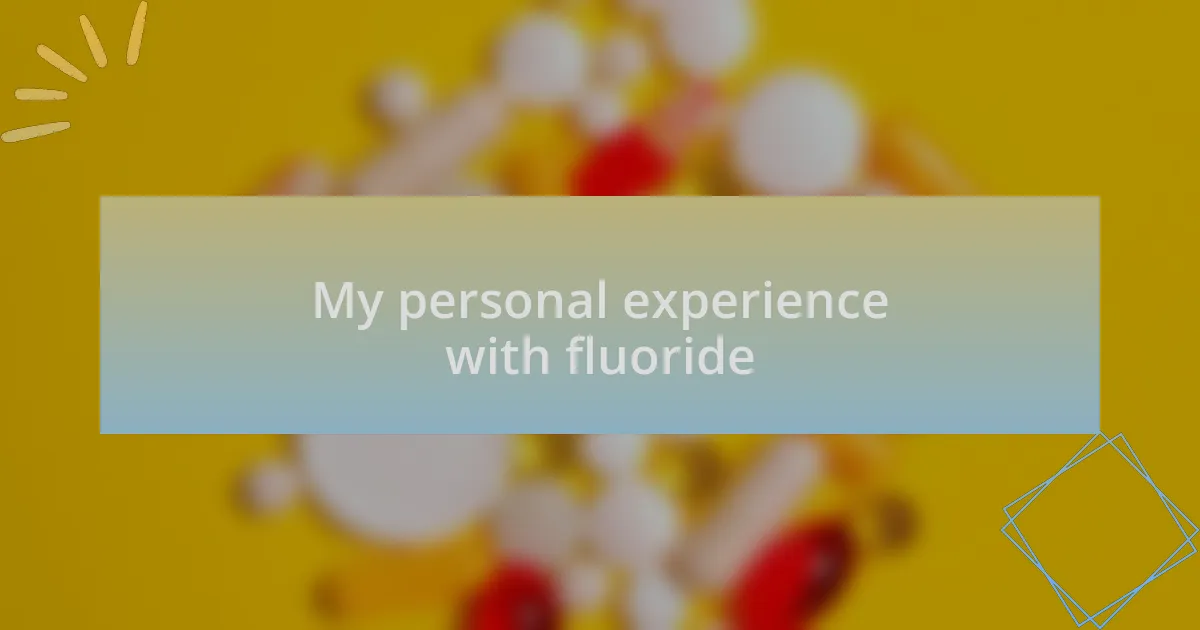
My personal experience with fluoride
I can still vividly remember the first time I experienced a fluoride treatment. The minty flavor was surprisingly pleasant, and I felt an instant sense of relief knowing my teeth were being protected. It was like giving my smile a little extra armor, and that feeling has stuck with me over the years.
In high school, I began to recognize the importance of fluoride as I navigated the challenges of braces. The additional treatments felt like a safety blanket, particularly on days when food got stuck in those metal brackets. I often wonder how much more vulnerable my teeth would have felt without those treatments; it’s comforting to think that something as simple as fluoride can make such a significant difference.
More recently, I’ve noticed how my dental team emphasizes the role of fluoride in preventing issues before they arise, especially since I’m more conscientious about my oral health now. It sparks a thought: how many people might overlook this key player in their dental care routine? Each time I leave the clinic after a fluoride treatment, I leave with a sense of assurance that I’m taking proactive steps in my dental journey.